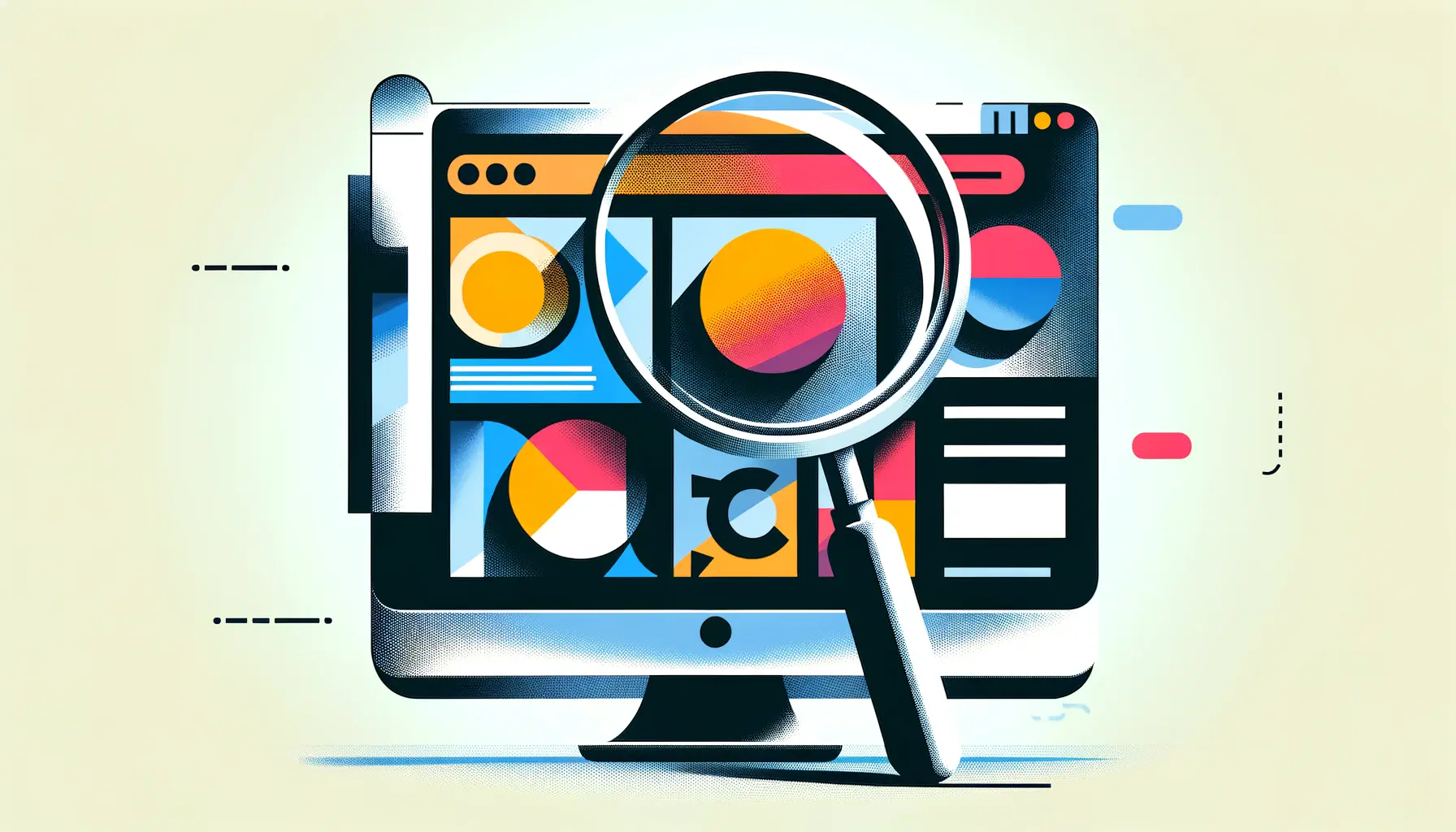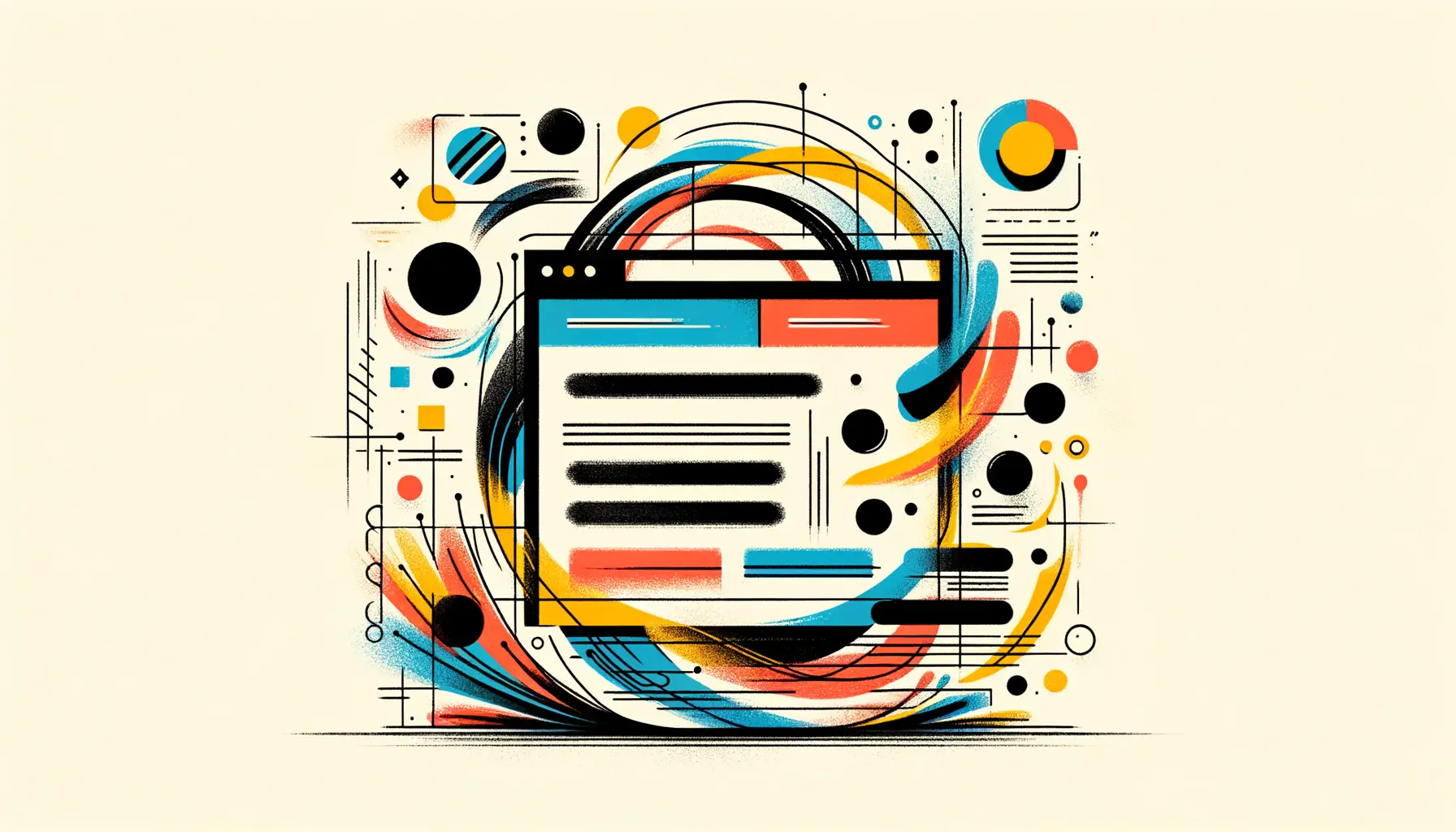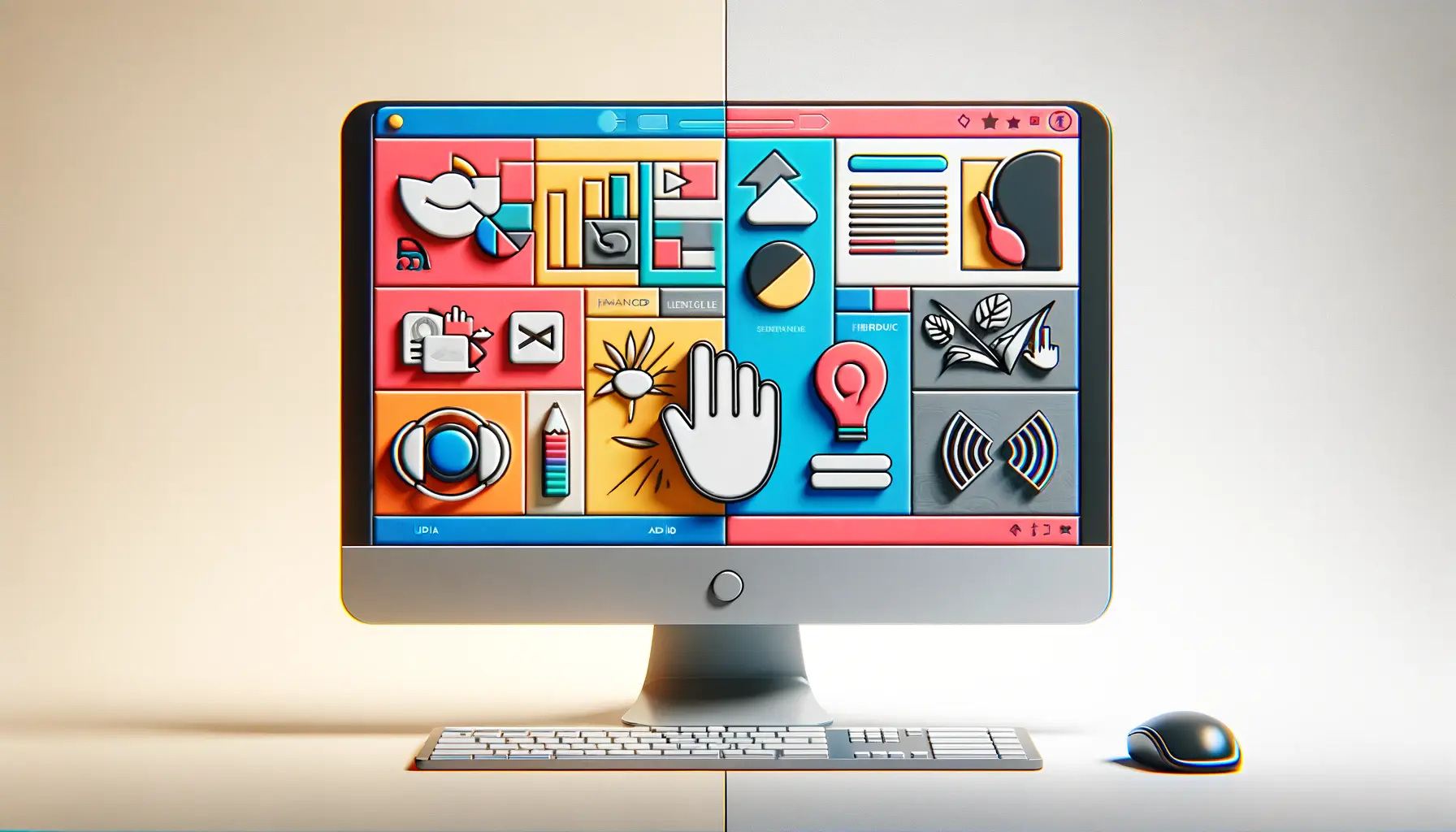Typography, the art of arranging type, plays a pivotal role in the digital landscape, particularly in enhancing website accessibility.
It’s not merely about choosing attractive fonts; it’s about creating an inclusive online environment where information is not just available but also readable for everyone.
This aspect of web design goes beyond aesthetics, touching on the very essence of how users interact with content on the internet.
The right typography can significantly lower barriers for users with disabilities, ensuring that the web remains an equitable space for all.
Understanding the impact of typography on website accessibility requires a deep dive into the nuances of type design and its interaction with various assistive technologies.
It’s about recognizing that every element, from font choice to letter spacing, can alter a user’s experience.
This article aims to explore the multifaceted role of typography in making websites more accessible, offering insights into how designers can leverage typography to not only convey messages but also to empower users.
- Understanding Typography and Accessibility
- Implementing Accessible Typography: Best Practices
- Typography and the User Experience
- Accessibility Challenges and Typography
- Technological Solutions for Accessible Typography
- Global Standards and Typography Accessibility
- Future Trends in Typography and Accessibility
- Embracing Typography for a More Accessible Web
- FAQs on Typography and Website Accessibility
Understanding Typography and Accessibility
At its core, typography in the context of web accessibility is about ensuring that text content is easily decipherable and legible for all users, including those with visual impairments, learning disabilities, or other conditions that affect how they perceive content.
The choice of typeface, font size, color contrast, and spacing all play critical roles in this endeavor.
A well-designed typographic setting can greatly enhance readability, reduce eye strain, and improve the overall user experience.
Accessibility in web design is not a new concept, yet its importance continues to grow as the internet becomes increasingly integral to daily life.
The principles of accessible typography align with broader web accessibility standards, such as those outlined by the Web Content Accessibility Guidelines (WCAG).
These guidelines serve as a benchmark for creating content that is accessible to people with a wide range of disabilities.
Key Principles of Accessible Typography
Creating accessible typography involves several key principles that designers must consider.
First and foremost is the selection of typefaces that are clear and easy to read.
Sans-serif fonts, for example, are often recommended for their simplicity and legibility on digital screens.
Another crucial aspect is font size; text should be large enough to be read comfortably by users with low vision, with the option to resize text without losing content or functionality.
Contrast is another vital component.
The color of text and its background must be distinct enough to be seen by users with color vision deficiencies.
Additionally, line spacing and letter spacing should be optimized to prevent text from appearing cluttered, which can be particularly challenging for users with dyslexia.
These principles, when applied thoughtfully, can make a significant difference in making web content accessible to a broader audience.
Ensuring that typography on your website is accessible is not just about compliance; it’s about creating an inclusive digital space that welcomes all users.
Implementing Accessible Typography: Best Practices
To effectively implement accessible typography on websites, designers must adhere to a set of best practices that cater to the diverse needs of users.
These practices are not just about meeting legal requirements but also about enhancing the user experience for everyone.
By focusing on readability, legibility, and overall text presentation, websites can become more inclusive and accessible.
Choosing the Right Typeface
Selecting an appropriate typeface is the first step towards creating accessible web content.
The goal is to choose fonts that are inherently readable across various devices and for users with different accessibility needs.
Here are some guidelines for selecting typefaces:
- Sans-serif fonts are generally preferred for their clean and straightforward appearance, which enhances readability on digital screens.
- Avoid decorative fonts for body text, as they can be difficult to read and may distract from the content.
- Consider fonts with a large x-height, which makes lowercase letters appear larger and easier to read.
Optimizing Font Size and Spacing
Adjusting font size and spacing is crucial for readability, especially for users with visual impairments.
Here are some tips to optimize these aspects:
- Ensure the default font size is large enough for most users, with a minimum of 16 pixels recommended for body text.
- Provide mechanisms for users to adjust font sizes according to their preferences without breaking the site layout.
- Use adequate line spacing (also known as leading) to improve readability. A general rule is to set line spacing at 1.5 times the font size.
- Adjust letter spacing (tracking) and word spacing to prevent text from appearing too cramped or too spread out.
Ensuring Sufficient Contrast
Contrast between text and its background is essential for users with low vision or color vision deficiencies.
To ensure sufficient contrast:
- Use high contrast color schemes, with a recommended contrast ratio of at least 4.5:1 for normal text and 3:1 for large text.
- Test your website’s color contrast using online tools like the WebAIM Contrast Checker.
- Avoid placing text over busy backgrounds, as this can significantly reduce legibility.
While implementing these best practices, always test your website with real users, including those with disabilities, to gather feedback and make necessary adjustments.
Typography and the User Experience
The influence of typography on the user experience (UX) extends far beyond mere aesthetics.
It plays a crucial role in how information is perceived and understood by users.
Effective typography enhances the clarity of content, guides users through a website, and contributes to a site’s overall accessibility and usability.
Enhancing Readability and Comprehension
Good typography enhances the readability of web content, making it easier for users to scan, read, and comprehend information.
Here are key factors that contribute to improved readability and comprehension:
- Consistent hierarchy: Using a clear and consistent typographic hierarchy helps users navigate content and understand its structure at a glance.
- Short paragraphs: Breaking text into shorter paragraphs makes content more digestible and less intimidating, encouraging users to engage with the material.
- Bullet points and lists: Presenting information in lists, as done here, can help highlight key points and organize content in an easily scannable format.
Guiding User Navigation
Typography also plays a pivotal role in guiding users through a website’s interface, affecting how they interact with various elements.
Effective typographic design can:
- Highlight calls to action (CTAs) by using distinctive fonts or styles that draw attention and encourage user interaction.
- Improve the navigation menu’s visibility and usability by using legible fonts and appropriate sizing, making it easier for users to find their way around the site.
- Use typographic cues, such as underlined links or color changes, to indicate clickable elements, enhancing the site’s interactive experience.
Contributing to Aesthetic Appeal and Brand Identity
While the primary focus of accessible typography is on functionality and usability, it also significantly contributes to a website’s aesthetic appeal and the expression of brand identity.
Thoughtfully chosen typography can:
- Convey a brand’s personality and values through the use of specific typefaces that align with the brand’s image.
- Create a visually pleasing layout that engages users and encourages them to spend more time exploring the site.
- Establish a cohesive visual language across different pages and sections of the website, reinforcing brand consistency.
Incorporating well-designed typography into your website’s UX strategy not only enhances accessibility but also significantly improves user satisfaction and engagement.
Accessibility Challenges and Typography
While typography can greatly enhance website accessibility, it also presents unique challenges that designers must navigate.
Understanding these challenges is crucial for creating web content that is truly accessible to all users, including those with disabilities.
Visual Impairments and Readability
Users with visual impairments face significant challenges when interacting with web content.
Poorly chosen typography can exacerbate these difficulties, making websites inaccessible.
Challenges include:
- Text that is too small or lacks contrast, making it hard for users with low vision to read.
- Fonts that are decorative or have irregular shapes, which can confuse users with visual processing disorders.
- Insufficient line spacing or letter spacing, which can cause text to blur together for users with certain visual impairments.
Dyslexia and Text Layout
For users with dyslexia, the way text is laid out on a page can significantly impact their ability to read and understand content.
Common issues include:
- Fonts that do not differentiate enough between similar letters, leading to confusion and misreading.
- Blocks of text that are too dense or wide, which can be overwhelming and difficult to follow.
- Lack of alternative text options, such as audio or video, which can provide a more accessible way to consume content.
Color Vision Deficiency and Contrast
Color vision deficiency, or color blindness, affects a significant portion of the population and poses challenges for accessing web content.
Typography-related issues include:
- Insufficient contrast between text and background colors, making text difficult to distinguish.
- Use of color alone to convey information, such as links or buttons, which may not be perceivable to all users.
- Overreliance on color cues without providing sufficient textual or contextual alternatives.
Addressing these challenges requires a thoughtful approach to typography and layout design, prioritizing accessibility and inclusivity at every step of the design process.
Technological Solutions for Accessible Typography
In the quest to overcome accessibility challenges related to typography, technology offers a range of solutions.
These innovations enable designers to create more accessible web experiences, ensuring that content is readable and engaging for all users, regardless of their abilities.
Responsive Typography
Responsive typography adapts to the screen size and resolution of the device being used, ensuring that text remains legible and well-spaced across all platforms.
This approach involves:
- Using relative units like percentages or viewport widths for font sizes, which allows text to scale dynamically based on screen size.
- Adjusting line heights and spacing to maintain readability on smaller screens or when text is enlarged.
- Implementing media queries to apply different typographic settings for various devices and orientations.
Dynamic Text Resizing Tools
Web accessibility tools and browser extensions that allow users to customize font sizes and spacing according to their preferences are essential for inclusivity.
These tools provide:
- Options for users to increase or decrease font size without losing content or functionality.
- Customization of line spacing and letter spacing to improve readability for users with dyslexia or other reading difficulties.
- Compatibility with screen readers and other assistive technologies, ensuring that changes in typography do not hinder their functionality.
High-Contrast Modes and Color Adjustment Features
For users with color vision deficiencies or low vision, high-contrast modes and color adjustment features can make a significant difference.
These technologies allow:
- Switching to high-contrast color schemes that enhance the visibility of text against its background.
- Customization of text and background colors to meet individual user needs and preferences.
- Integration with operating systems and browsers to ensure that these adjustments are easily accessible and widely supported.
Leveraging these technological solutions not only addresses specific typography-related accessibility challenges but also contributes to creating a more inclusive digital world.
Global Standards and Typography Accessibility
Ensuring typography is accessible involves adhering to global standards and guidelines designed to make digital content usable for everyone.
These standards provide a framework for designers and developers, guiding them in creating web experiences that are inclusive and accessible.
Web Content Accessibility Guidelines (WCAG)
The Web Content Accessibility Guidelines (WCAG) are developed by the World Wide Web Consortium (W3C) and serve as the primary international standards for web accessibility.
Key typography-related recommendations from WCAG include:
- Text alternatives for non-text content, allowing it to be changed into other forms people need, such as large print, braille, speech, symbols, or simpler language.
- Minimum contrast ratios for text and images of text, ensuring that text is easily distinguishable from its background.
- Resizable text that can be enlarged up to 200% without loss of content or functionality, accommodating users with visual impairments.
ADA Compliance and Digital Accessibility
In the United States, the Americans with Disabilities Act (ADA) has been interpreted to apply to digital content, requiring websites to be accessible to individuals with disabilities.
This includes:
- Ensuring that website typography is designed with accessibility in mind, following best practices for font choice, size, spacing, and color contrast.
- Providing accessible navigation and text alternatives for all interactive and multimedia elements.
- Regularly testing websites with assistive technologies and users with disabilities to identify and address accessibility barriers.
ISO Standards for Accessibility
The International Organization for Standardization (ISO) also provides guidelines for making products and services accessible to people with disabilities, including those related to digital content and typography.
These standards emphasize:
- The importance of designing digital content that can be used by as many people as possible, including those with disabilities.
- Guidelines for creating content that is perceivable, operable, understandable, and robust, aligning with the principles of WCAG.
- The role of typography in enhancing the readability and navigability of digital content, making it more accessible to a global audience.
Ignoring global standards and guidelines for typography accessibility can lead to exclusionary practices, limiting the reach and impact of digital content.
Future Trends in Typography and Accessibility
The intersection of typography and accessibility is an evolving field, with ongoing research and technological advancements shaping future trends.
As digital content becomes increasingly integral to our daily lives, the importance of accessible typography will only grow.
Here’s a look at some emerging trends that are likely to influence how typography is used to enhance website accessibility in the future.
Adaptive Typography Systems
Emerging technologies are enabling the development of adaptive typography systems that can automatically adjust based on a user’s preferences or environmental conditions.
These systems might:
- Change font sizes, weights, and spacing in real-time to improve readability under different lighting conditions or on various devices.
- Use machine learning algorithms to identify the most accessible typographic settings for individual users, based on their interaction patterns.
- Integrate with voice-controlled interfaces and other assistive technologies, providing a seamless experience for users with disabilities.
Inclusive Design Tools
As awareness of accessibility issues grows, design tools and software are increasingly incorporating features that support the creation of accessible digital content.
Future developments may include:
- Advanced design software that automatically checks for accessibility issues in typography, such as insufficient contrast or poor legibility.
- Templates and guidelines within design tools that help designers adhere to best practices for accessible typography from the start of a project.
- Collaboration platforms that allow designers, developers, and accessibility experts to work together more effectively, ensuring that typography and other design elements meet accessibility standards.
Global Accessibility Awareness
The global conversation around accessibility is expanding, with more organizations and individuals recognizing the importance of inclusive design.
This increased awareness is likely to lead to:
- Greater emphasis on accessibility in design education, preparing the next generation of designers to prioritize inclusivity in their work.
- More widespread adoption of accessibility standards and guidelines across industries, making accessible typography a standard practice rather than an afterthought.
- Increased advocacy for digital rights, ensuring that accessibility considerations are integrated into public policy and corporate governance.
As we look to the future, the role of typography in enhancing website accessibility will continue to evolve, driven by technological innovation, increased global awareness, and a commitment to creating an inclusive digital world for all users.
Embracing Typography for a More Accessible Web
The journey through the nuances of typography in enhancing website accessibility reveals a landscape rich with challenges, innovations, and opportunities.
As digital content becomes ever more central to our lives, the imperative to design with accessibility in mind has never been clearer.
Typography, often overlooked in discussions about accessibility, emerges as a critical element in creating inclusive digital experiences.
It’s not just about making sites look good; it’s about making them usable and enjoyable for everyone, regardless of their abilities.
The Path Forward
Looking ahead, the future of accessible typography is bright, fueled by technological advancements, evolving design practices, and a growing global commitment to inclusivity.
Adaptive typography systems, inclusive design tools, and increased awareness promise to make accessible design not just a best practice but a standard part of the web design process.
As designers, developers, and content creators, we have the tools and knowledge at our disposal to make a significant impact.
Key Takeaways for Designers and Developers
- Adopting best practices in typography can significantly enhance website accessibility, making content more readable and navigable for users with disabilities.
- Global standards like WCAG provide valuable guidelines for creating accessible digital content, emphasizing the importance of font choice, size, spacing, and color contrast.
- Technological solutions, including responsive typography and dynamic text resizing tools, offer practical ways to address common accessibility challenges.
- The future of accessible typography will be shaped by innovations in adaptive typography systems, the development of inclusive design tools, and a deeper understanding of user needs.
In conclusion, the role of typography in enhancing website accessibility is both profound and multifaceted.
By embracing the principles of accessible design and leveraging the latest technological solutions, we can create digital experiences that are not only beautiful but also universally accessible.
As we continue to push the boundaries of what’s possible, let’s remember that at the heart of accessibility lies the fundamental belief in the web as a space for all.
Through thoughtful and inclusive typography, we can bring that vision to life, one character, one word, one line at a time.
Quality web design is key for a great website! Check out our service page to partner with an expert web design agency.
FAQs on Typography and Website Accessibility
Explore common questions about the role of typography in creating accessible websites, offering insights and best practices.
Accessible typography involves designing text for websites in a way that everyone, including people with disabilities, can easily read and understand.
Typography impacts readability, comprehension, and user experience, making it crucial for ensuring websites are accessible to all users.
Font choice determines legibility and readability, affecting how easily users with visual impairments can access and understand content.
A minimum font size of 16 pixels is recommended to ensure text is legible for users with visual impairments.
High color contrast between text and background improves legibility for users with color vision deficiencies or low vision.
Adequate line spacing prevents text from appearing cluttered, aiding users with dyslexia or other reading difficulties.
Yes, clear and consistent typography guides users through a website, enhancing the overall navigability and user experience.
Websites can follow WCAG guidelines, use legible fonts, ensure sufficient contrast, and allow users to customize text settings.













